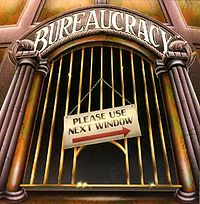How hard was it to see a Byzantine emperor in person?
 Almost impossible. The emperors were removed from the masses both as a security measure and a means to emphasize their distinct and sacred nature. For the select few, however, it was possible. The emperor Constantine VII Porphyrogenitus (913-59) left us a detailed description of protocol called the De Cerimoniis. From it- and from the writings of the visiting diplomat Liutprand of Cremona- we can piece together a “normal” visit to Constantinople’s throne room.
Almost impossible. The emperors were removed from the masses both as a security measure and a means to emphasize their distinct and sacred nature. For the select few, however, it was possible. The emperor Constantine VII Porphyrogenitus (913-59) left us a detailed description of protocol called the De Cerimoniis. From it- and from the writings of the visiting diplomat Liutprand of Cremona- we can piece together a “normal” visit to Constantinople’s throne room.
Liutprand was of very important rank (though not quite so high as he thought) and so was seen rather quickly. He arrived in a pouring rainstorm and only had to wait several hours outside the Chalke- the massive bronze entrance gate to the Great Palace complex- before being admitted. He was quartered in a large mansion (he complains that it was too drafty) and was left there for six days before being summoned. He met with the imperial chancellor- in this case the emperor’s brother- who instructed him how to address the emperor, where to stand, and when to kneel, etc. A day later he was led by two eunuchs into the Chrysotriklinos- a palace containing the main throne room. As he approached, the famous mechanical birds and golden lions began to sing and roar- a psychological maneuver calculated to awe the unsuspecting diplomat. But Liutprand had been informed of this part of the spectacle and cooly knelt before the emperor without betraying any surprise. After the customary three bows he looked up and was stunned to find that the emperor’s throne had risen up to the ceiling and its occupant was now wearing a completely different set of robes.
The emperor then addressed Liutprand at length after which he was allowed to deliver his message. Liutprand and his entire party was then invited to a banquet. This was in effect the closing ceremonies where you could gauge how highly you were in the emperor’s favor by how physically near to him you were positioned. Liutprand as usual was offended- he complained that he was 15 tables away and without such basics as a tablecloth. The meal itself, however, was a true spectacle. The golden dining room was lit by great chandeliers, glittering imperial regalia, and relics from various churches scattered throughout the room. Music was provided by the choirs of the Hagia Sophia and the Holy Apostles, accompanied by music from two silver and golden organs.
Liutprand’s only comment about all of this? The food was too oily.
I think that some of De Cerimoniis goes back to imperial court procedures in the 6th century. The birds singing and lions roaring most be a steam engine device from the 1st century. In the Great palace there is a mosaic of a water mill. Water mills might have reach their peak in the 3rd century A.D. in Gaul.
LARS: Where did you get ‘almost impossible’ from?
Emperors regularly rode down the Mese, the main street of Constantinople in triumphs and other arrivals and departures: *the very purpose was for the masses to see them.* You had an almost imtimate view if you were high-up in an apartment or at the front of the ground-level crowd: cf Bastille Day in Paris today. (+ Search using the words \Skylitzes manuscript\ in Google Images.) And they presided regularly in the Hippodrome before thousands, to the acclamation of the Greens and Blues: they all did this, whether they liked chariot-racing or not [\not\ probably describes Constantine VII], because again *the idea was to be seen*. Think too of Empress Irene AD 800 personally tossing gold coins into the hands of the populace. Think too of Clavijo in 1403 easily getting a view – as one of the crowd – of the Empress mounting her horse as she left after Mass at Hagia Sophia. Etc, etc, etc.
CYNTHIA: The metal birds singing and lions roaring are definitely 9th-10th century, as Lars says/implies. 10th C protocol was quite different from 6th C, altho’ C’ine VII did borrow some of his innovations from the past. The birds and lions and the ascending throne are supposed to have been invented (re-invented?) by the scholar Leo ‘the Mathematician’, fl. AD 840 – he too may well have consulted ancient texts.
Steam machines go back to BC, namely Hellenistic Alexandria. I am not aware of any evidence our Byz’s used steam; I think the birds and lions and the ascending throne were operated by water-weights and metal/stone counterweights plus pulleys. I expect – I am guessing here – that the singing was air expelled by water-pressure, as in the hydraulic organ (which Byzantium, unlike medieval Rome, inherited from Antiquity).
Michael,
I was referring to how hard it was to be granted an imperial interview (ie meet him in person). You’re right to point out how visible emperors were- especially riding in triumphs or at the games. One of the main functions of the hippodrome, after all, was an informal airing of what was on the populace’s mind- and wise emperors took heed. But seeing the emperor and seeing him were too different things.